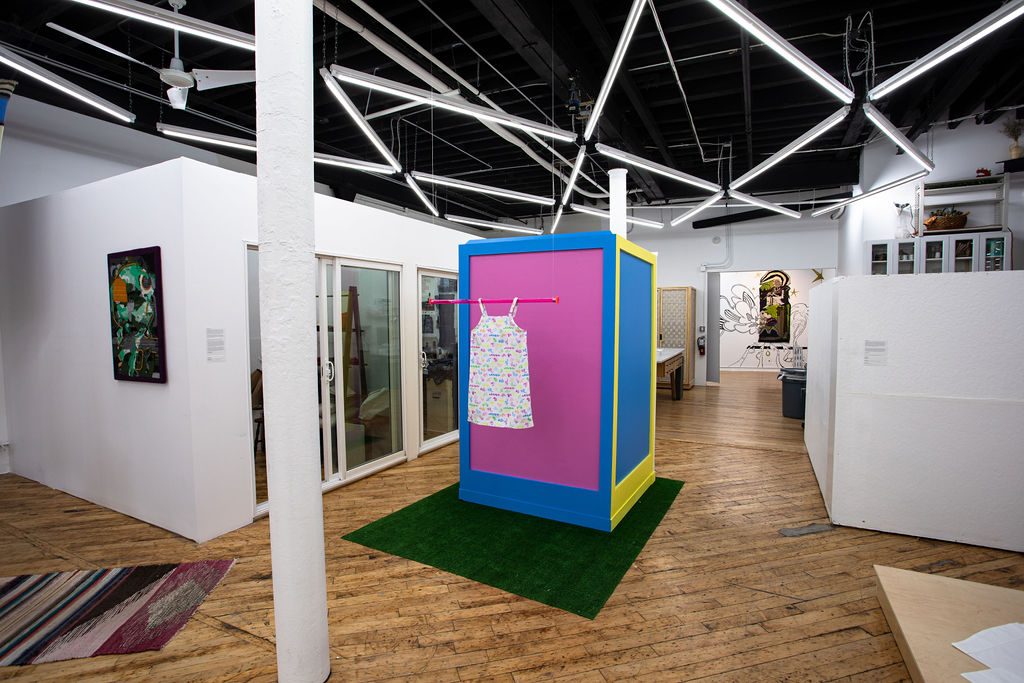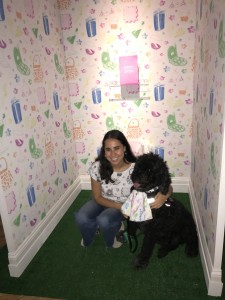AIR Artist Highlight: Erin Palumbo
Erin Palumbo, a 2018 graduate of the Rhode Island School of Design (RISD), came to the Textile Arts Center after her mother’s urging. Donna had taken dyeing classes at TAC and thought the Artists in Residency program might be a good fit for her. Mom turned out to be right.
“AIR definitely helped me realize that there’s no one way to have [an artistic] practice. Everybody has their own way that they do things, their own way that their mind formulates their ideas,” says Erin during our FaceTime interview, since she now lives in Philadelphia as a graduate student at Thomas Jefferson University. “The residency really helped me develop and know that my practice is legitimate.”
She adds that the community at TAC contributed to feelings of validation: “I was always surrounded by other people, so I could interact and get feedback. You don’t always get that when you rent studio space and you’re alone.” As a recent graduate, Erin could easily compare the AIR program to her college experience.
“There was a lot less pressure [than at RISD],” she says. “The only pressure was the pressure I put on myself. It took me a while to accept that this was supposed to be fun.” Of course, that’s not to say that TAC’s AIR program was a free-for-all. “I like how the program offered guidance and some structure,” says Erin. “It was kind of like school in that sense, but without deadlines, pressure, and stress. It helps you to not get lost, but you can really enjoy your process.”
Erin’s process began when she was young. Since her mother is a textile designer, she explains that she has been around textiles her whole life. Yet she didn’t immediately think she would follow her mother’s path.
“We always try not to be like our parents, but we are exactly like them,” she laughs. Mid-way through college, Erin took courses in textiles. Toward the beginning of her senior year, she felt she had found her calling. At that point, she was a printmaking major with a practice rooted in drawing. She started to see how she could translate her drawings into textiles. During the TAC AIR program, Erin worked part-time at interior textile design studios to expand her technical knowledge. “TAC helped me facilitate my personal ideas while I worked at the studios,” she says.
“TAC was kind of like school in that sense, but without deadlines, pressure, and stress. It helps you to not get lost, but you can really enjoy your process.”
For the AIR program’s group exhibition, Lost/Found, in September, Erin created CUTE SOFT, an immersive experience. She created a room, almost like a booth, with printed fabric walls akin to wallpaper. A dress with a double-sided print (front and back) hung on the outside of the room. Inside the room was a book containing five prints. Astroturf lined the floor. The aesthetic is as “cute” as the title implies: bright, colorful, and youthful.

“Over the past two years, I’ve been doing a lot of research on post-internet theory,” says Erin. “I chose to focus on two concepts [for this piece]: escapism and consumption/instant gratification.”
She adds, “It is a cute, soft space. The idea is when you’re reading the book, you’re physically inside of it. The purpose of the garment is to give the idea that you can wear this world that I created. Then there’s the idea of being able to sell it, own it, keep it—mass consumption.”
Erin explains the relevance of “cuteness” to CUTE SOFT as this: “Cuteness is this idea that you can make something more appealing. If it’s appealing, it can sell. More people want it. I use [cuteness] in my work as a way of being able to approach heavy subject matter in a way that’s approachable.”
Now that she’s in grad school, Erin is making a collection and learning relevant science and technology along the way. “I’m not saying good-bye to all of this research, but I feel like I can now begin to explore it in different ways,” she says. She credits TAC AIR as the place to explore and complete that research—for now.

